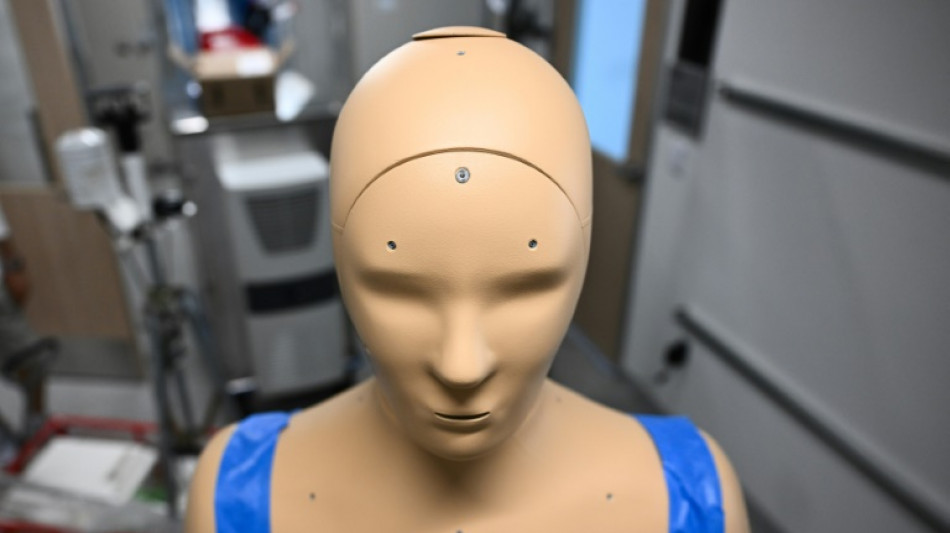
-
 Bucks launch NBA Cup title defense with win over Bulls
Bucks launch NBA Cup title defense with win over Bulls
-
Chinese ship scouts deep-ocean floor in South Pacific

-
 Taiwan badminton star Tai Tzu-ying announces retirement
Taiwan badminton star Tai Tzu-ying announces retirement
-
New York City beat Charlotte 3-1 to advance in MLS Cup playoffs

-
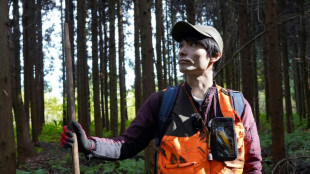 'Almost every day': Japan battles spike in bear attacks
'Almost every day': Japan battles spike in bear attacks
-
MLS Revolution name Mitrovic as new head coach

-
 Trump gives Hungary's Orban one-year Russia oil sanctions reprieve
Trump gives Hungary's Orban one-year Russia oil sanctions reprieve
-
Owners of collapsed Dominican nightclub formally charged
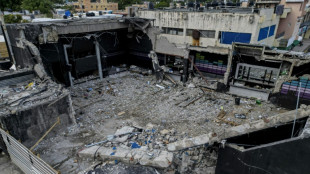
-
 US accuses Iran in plot to kill Israeli ambassador in Mexico
US accuses Iran in plot to kill Israeli ambassador in Mexico
-
New Zealand 'Once Were Warriors' director Tamahori dies
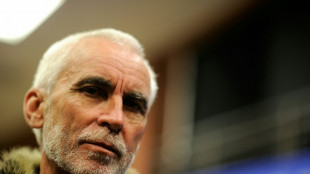
-
 Hungary's Orban wins Russian oil sanctions exemption from Trump
Hungary's Orban wins Russian oil sanctions exemption from Trump
-
More than 1,000 flights cut in US shutdown fallout

-
 Turkey issues genocide arrest warrant against Netanyahu
Turkey issues genocide arrest warrant against Netanyahu
-
Countries agree to end mercury tooth fillings by 2034

-
 Hamilton faces stewards after more frustration
Hamilton faces stewards after more frustration
-
World's tallest teen Rioux sets US college basketball mark

-
 Trump pardons three-time World Series champ Strawberry
Trump pardons three-time World Series champ Strawberry
-
Worries over AI spending, US government shutdown pressure stocks

-
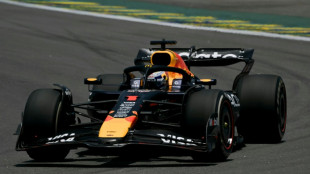 Verstappen suffers setback in push for fifth title
Verstappen suffers setback in push for fifth title
-
Earth cannot 'sustain' intensive fossil fuel use, Lula tells COP30

-
 Wales boss Tandy expects Rees-Zammit to make bench impact against the Pumas
Wales boss Tandy expects Rees-Zammit to make bench impact against the Pumas
-
James Watson, Nobel prize-winning DNA pioneer, dead at 97

-
 Medical all-clear after anti-Trump package opened at US base
Medical all-clear after anti-Trump package opened at US base
-
Sabalenka beats Anisimova in pulsating WTA Finals semi

-
 Iran unveils monument to ancient victory in show of post-war defiance
Iran unveils monument to ancient victory in show of post-war defiance
-
MLS Revolution name Mitrovic as hew head coach

-
 Brazil court reaches majority to reject Bolsonaro appeal against jail term
Brazil court reaches majority to reject Bolsonaro appeal against jail term
-
Norris grabs pole for Brazilian Grand Prix sprint race

-
 More than 1,200 flights cut across US in govt paralysis
More than 1,200 flights cut across US in govt paralysis
-
NFL Cowboys mourn death of defensive end Kneeland at 24

-
 At COP30, nations target the jet set with luxury flight tax
At COP30, nations target the jet set with luxury flight tax
-
Trump hosts Hungary's Orban, eyes Russian oil sanctions carve-out

-
 All Blacks 'on edge' to preserve unbeaten Scotland run, says Savea
All Blacks 'on edge' to preserve unbeaten Scotland run, says Savea
-
Alpine say Colapinto contract about talent not money

-
 Return of centuries-old manuscripts key to France-Mexico talks
Return of centuries-old manuscripts key to France-Mexico talks
-
Byrne adamant Fiji no longer overawed by England

-
 Ex-footballer Barton guilty over 'grossly offensive' X posts
Ex-footballer Barton guilty over 'grossly offensive' X posts
-
Key nominees for the 2026 Grammy Awards

-
 Brazil court mulls Bolsonaro appeal against jail term
Brazil court mulls Bolsonaro appeal against jail term
-
Rybakina sinks Pegula to reach WTA Finals title match

-
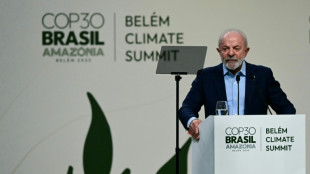 Earth 'can no longer sustain' intensive fossil fuel use, Lula tells COP30
Earth 'can no longer sustain' intensive fossil fuel use, Lula tells COP30
-
Kendrick Lamar leads Grammy noms with nine

-
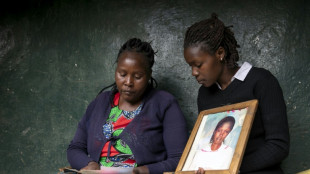 Ex-British soldier fights extradition over Kenyan woman's murder
Ex-British soldier fights extradition over Kenyan woman's murder
-
Kolisi to hit Test century with his children watching

-
 Alex Marquez fastest in practice ahead of Portuguese MotoGP
Alex Marquez fastest in practice ahead of Portuguese MotoGP
-
Will 'war profiteer' Norway come to Ukraine's financial rescue?

-
 Tech selloff drags stocks down on AI bubble fears
Tech selloff drags stocks down on AI bubble fears
-
Blasts at Indonesia school mosque injure more than 50

-
 Contepomi says lead-in to Wales match a 'challenge' for Argentina
Contepomi says lead-in to Wales match a 'challenge' for Argentina
-
Greece woos US energy deals, as eco groups cry foul


A sweaty robot may help humans understand impact of soaring heat
What happens to the body when a human gets heatstroke? How can we protect ourselves in a warming planet? To answer these burning questions, Arizona researchers have deployed a robot that can breathe, shiver and sweat.
The southwestern state's capital Phoenix is currently enduring its longest heat wave in history: on Friday, the mercury exceeded 110 degrees Fahrenheit (43 degrees Celsius) for the 22nd day in a row, an ominous demonstration of what's to come in a world impacted by climate change.
For humans, such heat represents a potentially lethal threat, one that is still not fully understood. But for ANDI -- a one-of-a-kind humanoid robot at Arizona State University -- it's a lovely day out.
"He's the world's first outdoor thermal mannequin that we can routinely take outside and ... measure how much heat he is receiving from the environment," mechanical engineering professor Konrad Rykaczewski told AFP.
ANDI is "a very realistic way to experimentally measure how a human person responds to extreme climate" without putting people themselves at risk, Rykaczewski says.
At first glance, ANDI -- which stands for Advanced Newton Dynamic Instrument -- resembles a simple crash-test dummy.
But its epoxy/carbon fiber skin conceals a treasure trove of technology, such as a network of connected sensors that assess heat diffused through the body.
ANDI also has an internal cooling system and pores allowing it to breathe and sweat. There are 35 independent thermal zones and, like humans, the robot -- which cost more than half a million dollars to build -- sweats more from its back.
Until now, only a dozen or so mannequins of this type existed, and none of them could venture outdoors.
They were mainly used by sports equipment manufacturers to test their technical clothing in thermal chambers.
- Hyperthermia, a 21st century condition -
Researchers hope the robot will provide a better understanding of hyperthermia -- that is, when a body overheats, a condition that is threatening a growing proportion of the world's population as a result of global warming.
For obvious ethical reasons, "nobody measures core temperature increase while somebody's getting heatstroke," says Rykaczewski. But the effects of heat on the human body are still not fully comprehended. ANDI gives researchers a chance to understand.
Accompanied by MaRTy (Mean Radiant Temperature), a mobile weather station that measures the heat reflected by the buildings around it, the robot is taking its first steps outside in Phoenix -- an ideal laboratory in which to prepare for tomorrow's climate.
"How do we change what we wear? How do we change our behavioral patterns, and adjust them to temperatures that are of this order of magnitude?" says Rykaczewski.
Andi is also infinitely reprogrammable. The research team can make "digital twins of the mannequin to look at different segments of the population," explains Jennifer Vanos, a climatologist involved in the project.
For example, the older you get, the less you sweat. Young people will need different protection from athletes or people in poor health. With ANDI, scientists can simulate the thermoregulatory mechanisms specific to each individual.
- Phoenix, test lab for the future -
They can also test the robot in a variety of situations. For example, Phoenix is dry -- what about humid heat? How does the human body cope in hot winds?
Their research will be useful for designing heat-resistant clothing, rethinking urban planning and protecting the most vulnerable.
In Phoenix, which opens dozens of cooling centers for the homeless every summer, their findings could guide the actions of social workers.
"How long should a person stay in a cooling center to cool off, so that their core temperature goes down to a level that's safe again? We can answer that question with Andi," says Vanos.
The team also dreams of developing low-cost sensors to be used on building sites to adjust working hours according to the heat actually felt on site and the health of the workers -- rather than based on general weather conditions.
That could be a "step towards better safety than just these blank recommendations per city, per state, per country," Rykaczewski says.
Such specific, tailored solutions could have global impacts, redrawing entire cities.
"If the future of Paris looks like Phoenix now, we can learn a lot about how do we design buildings," says Rykaczewski.
P.Tamimi--SF-PST
